Hello and welcome to my new blog series “But Make It Accessible”, where I speak to brands that are working to create beautiful and stylish clothes that are also accessible.
Rediscovering my love for fashion since becoming a wheelchair user has brought a lot of joy into my life, but also a lot of challenges. I really struggle to find clothes in my style that are easy to get on AND match my access needs: which mostly means not causing subluxations while getting dressed, have soft fabrics that don’t irritate my skin, fit in a way that doesn’t hurt my body when it’s on, and looks good both sitting down in a wheelchair and standing up.
I was surprised at how difficult it has been to find dresses that I love that fall within these requirements, and like with many things accessibility-related, was disappointed by the lack of options.
I especially found that a lot of clothes that were specifically marketed as ‘accessible’ seemed targeted at older people, or at least didn’t fall within the style of clothing I’d ever choose to buy. I mostly just buy clothes I like for aesthetic purposes and get help putting them on and off because sometimes I just want to look pretty and not spend even longer trawling the internet.
So, I decided to set off on a mission to find and showcase some brands that are doing great things to make their clothes wearable and comfortable, but also beautiful.
As with everything disability related, ‘accessible’ means different things to different people, and at the beginning of this series I’ll be writing a lot about clothes that are accessible for me with my physical needs, but I’m also hoping to speak to companies that create clothes for people with different disabilities to mine, and therefore different accessible clothing needs, too! So please keep that in mind as you read on.
I think it’s great to celebrate the amazing things that are being done to give people with all kinds of disabilities options and access to style. If there are any fab companies you’d like me to feature, please do let me know!
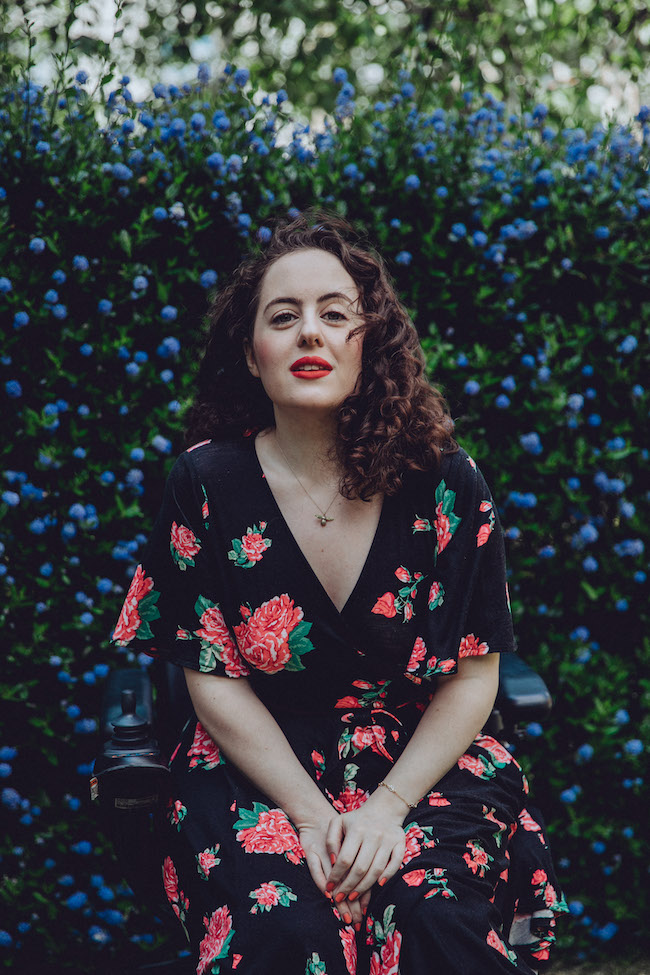
The first brand I’ll be talking about is Wax Poetic Clothing, a popular US-based brand that sells vintage-inspired clothes.
One of the co-founders, Johanna, actually reached out to me on Instagram a little while ago, explaining that she too had chronic illness, designed many of her clothes with accessibility in mind, and would love to send me one of her dresses. I very gratefully said yes, and it is honestly the most comfortable and easiest to put on dress I own.
Interestingly, they don’t advertise their clothes as being accessible per se, and because of that I was interested in speaking to Johanna and finding out more about how she’s bringing more accessible clothes to the vintage community!
Can you tell me a little bit about Wax Poetic Clothing?
One day my husband and I were talking about my career, and he pretty much told me he thought that it was time for me to make a move and create my own clothing line – kind of one of those “it’s now or never” conversations.
So, we decided to partner up to create Wax Poetic – we knew from the beginning that we wanted everything to be made in the USA, in order to combat fast fashion and create pieces that our customers would want to keep in their closets for years, not just one season.
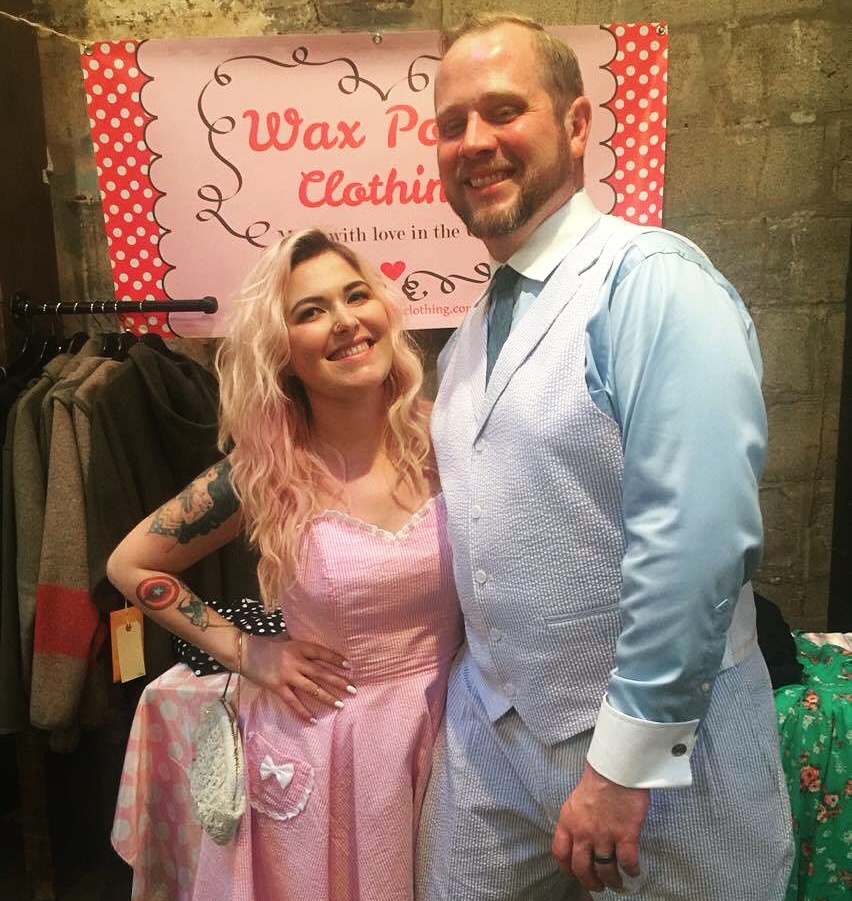
I was extremely lucky because my boss was so supportive (and continues to be!) in this endeavor, so I’m able to keep my day job while Wax Poetic grows. It’s a lot, designing for one company while running my own on the side, but it’s been a rewarding learning experience (to say the least!) so far.
Our styles are very vintage inspired, but we’re not dedicated to one particular era – we’re making some very exciting Mod pieces for this Autumn for the first time, but we’ll also have 40’s and 50’s inspired silhouettes.
What chronic illness do you have and how does this impact how you’re able to run your business? What adjustments have you had to make, and how does it impact your design ethos?
I have Rheumatoid Arthritis and Sjogren’s syndrome. I was diagnosed on my 27th or 28th birthday, I can’t remember which. I only remember that it was my birthday, being really upset, and asking myself why in the world I scheduled this doctor’s visit on my birthday??
The good thing about being diagnosed back then is that I dealt with a lot of really awful days, so I knew that I was up against in terms of pain, fatigue, depression, etc.
We launched Wax Poetic when I was 30, so at that point I already had a pretty good handle on how to cope with my illness, and for the most part knew what my limitations would be (or so I thought, since it seems to change daily!)
At that point I still hadn’t found a medication that was slowing the progression of the disease and joint damage, so it was still a daily struggle, but being able to use a computer for most things rather than having to write or draw with a pen/pencil was really helpful.
The worst part about this is that I don’t have good use of my hands very often, so on my good days I make sure to sketch as many ideas as I can on paper. The rest of the time my sketches are done in Illustrator, because even though I use a pen/tablet, I don’t have to press hard so it’s not as painful as writing with a pencil.
The hardest thing to overcome is that I barely draw anymore – and I used to paint, draw, doodle all the time. The medication that I’m on now seems to be helping more than others, so I’m hoping – knock on wood – that that continues, and I’ll be able to start sketching more again.
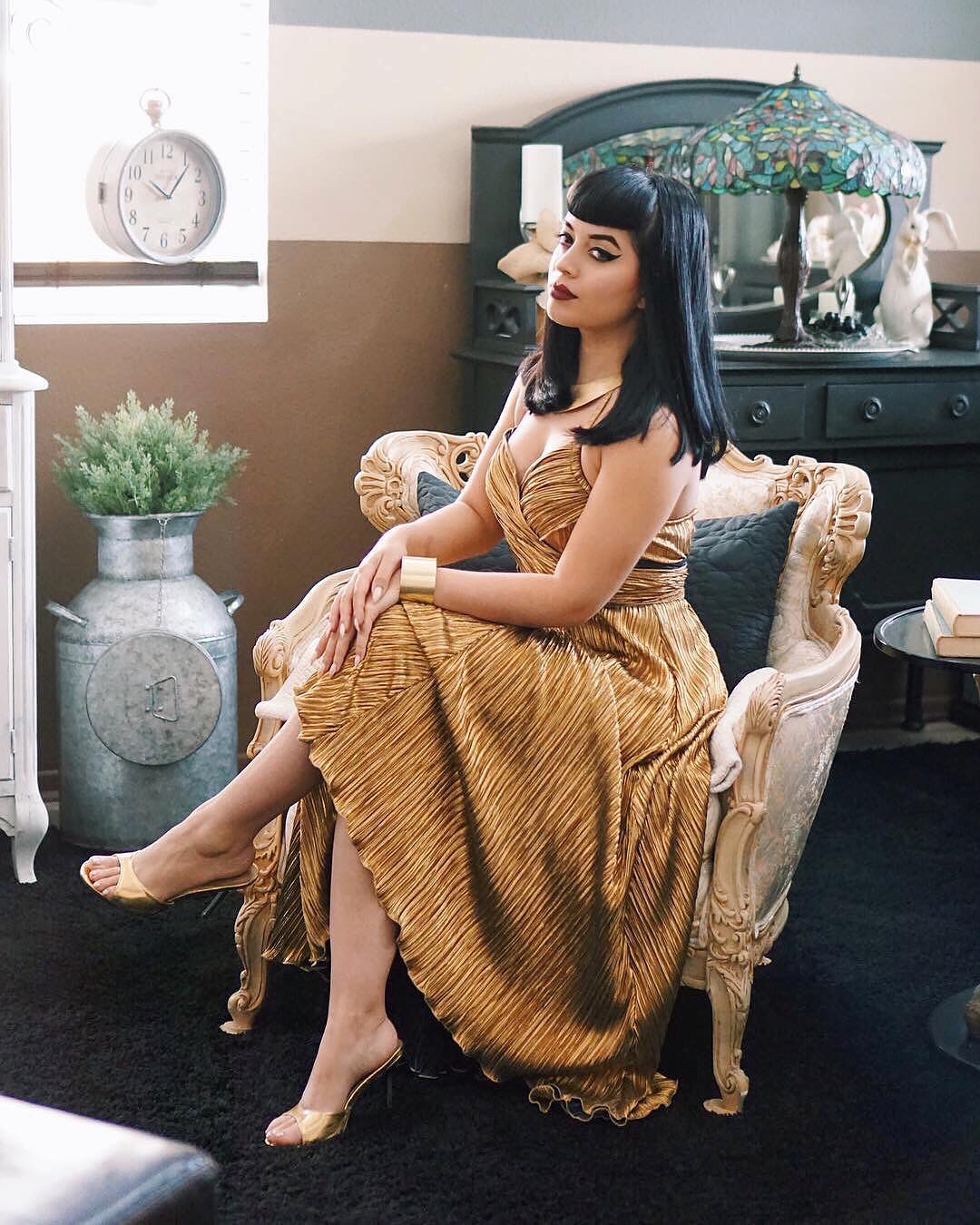
Can you tell me a little bit about the accessible clothes in your range, and the process that went into designing them? I’m particularly interested as to whether it’s any more complicated to make, the design decisions you made etc!
Basically when I want to make something, the first thing I think about is how is someone going to get this on? More specifically, how am I going to get it on?
I have days where I can’t dress/undress myself, so I want to make sure it’s easy and not like putting myself into some kind of antique contraption. I definitely prefer to design dresses because it’s only one thing to have to worry about, rather than dealing with separates.
I would say for the most part, designing things that are easily accessible are easier to make, because there’s usually no zipper or buttons, which means less time for production and also less cost.
The Aurora dress has by far been my most favorite accessible design, since it’s a true wrap dress and it means it can be put on without having to lift your arms up, or worry about having to wiggle into it. It literally just slides on and that for me is a major win. If I’m having a flare up it’s the easiest style to wear, because I can still look put together but it takes minimal effort to get dressed.
It’s not just about the silhouette though, the fabric also has to feel amazing. That is the very first thing I look for when I’m sourcing new fabrics. If it doesn’t feel soft/silky/smooth, it doesn’t make the cut.
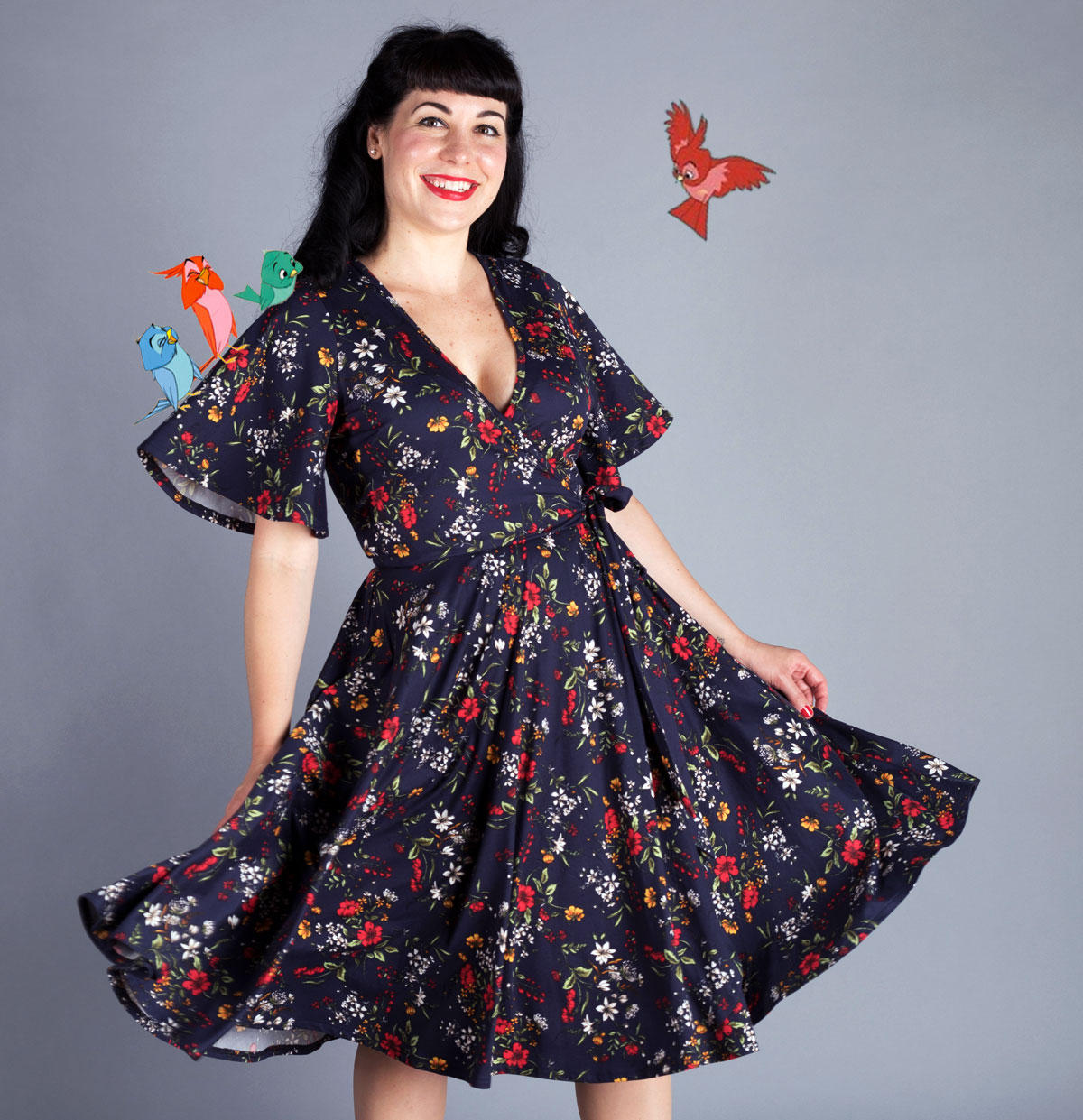
A lot of times, wrap dresses are not REALLY wrap dresses – they’re usually a faux wrap with an elastic waistband that pulls over your head. Our wrap dresses are a true wrap, and super easy to slip on.
When I was designing this dress I wanted to make sure that it had a nice, wide sweep so that when someone sits down the whole dress doesn’t fall open (and also it’s great for twirling!!). There’s a hole in the one side seam for the waist ties to go through, and it’s fully adjustable so it will never be uncomfortable on the waistline. Even if someone has to have assistance getting it on, it’s still easy because there are no buttons, zippers, hook and eyes, etc that need to be fussed with.
Do you feel that there are any barriers to creating more accessible designs? If so, what can be done to overcome them? If not, why do you think more brands (including vintage inspired!) do not make these changes?
Literally the first thing I think of is “how will someone get this on?” when I come up with something new. I like creating things that look polished and beautiful without being too fussy.
We have a couple of pieces that are more complicated than others, but we make sure that if it’s got a zipper, it’s long enough that it can be stepped into and not wiggled into.
For our brand specifically, the barrier to make more accessible items is cost of production. Since our garments are made in the USA we have a much higher cost for sampling, production, materials etc so we have to make sure that we’re really in love with an item to move forward with it. The accessibility part hasn’t been too difficult for me, because I fit everything on myself, and if I can get it on without having to struggle then it’s a winner!
Do you have any plans to create more accessible styles? Would anything change from what you’ve already created?
Yes, I am still working to create more accessible styles, and I’m trying to put more thought into it for upcoming seasons. I know that my limitations are minimal compared to those of others, so I am looking to find out what are the major hurdles that other people have to overcome in order to get dressed, and move on from there.
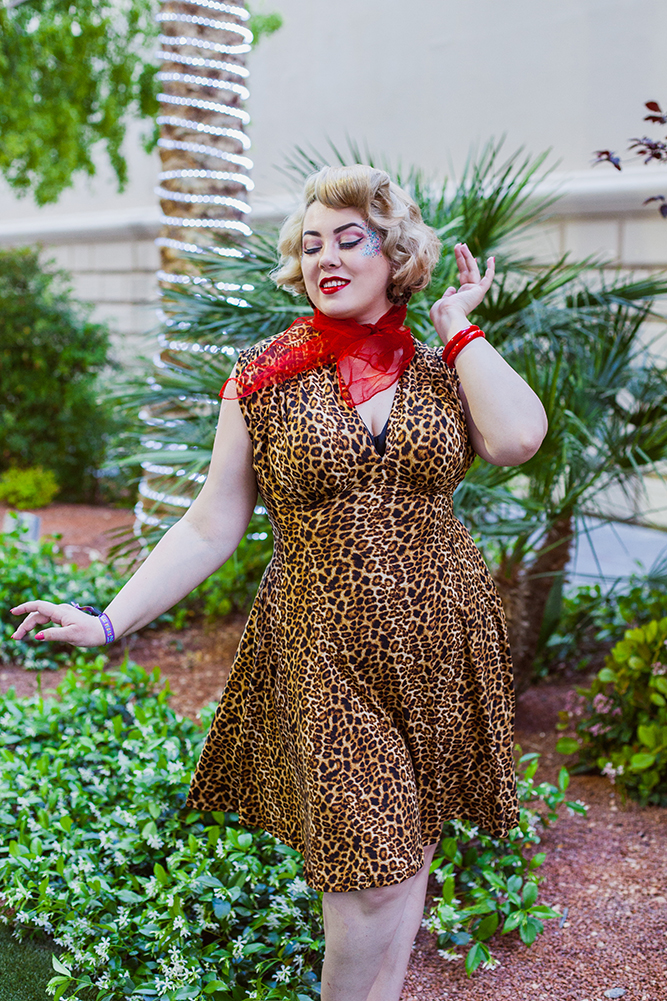

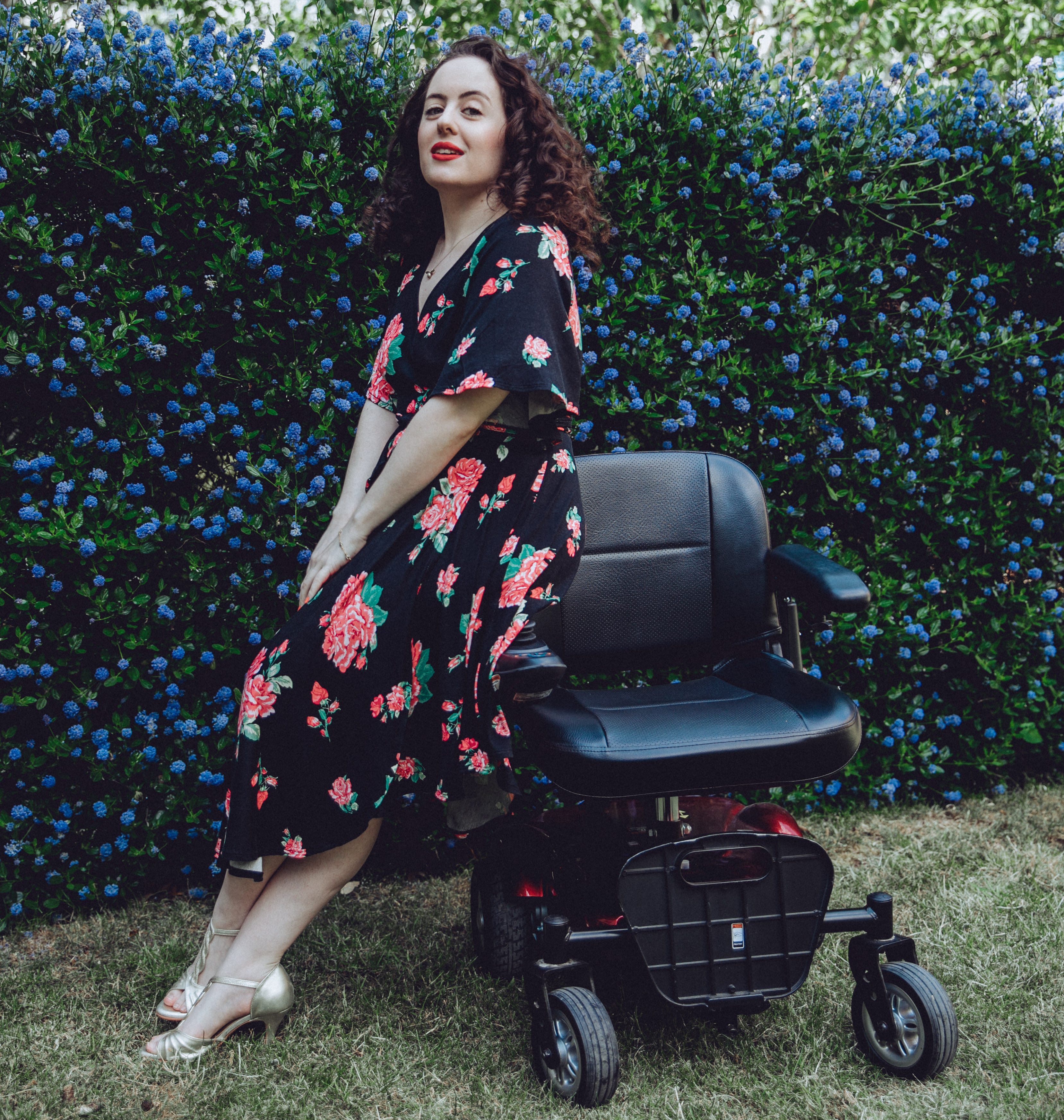

1 thought on “But Make It Accessible: Wax Poetic Clothing”
Natasha, I am glad that you found Joanna who can design clothes suited for your disability. Those Wax Poetic clothing which Joanna designed looks so nice and I am sure that they would look very good on you.